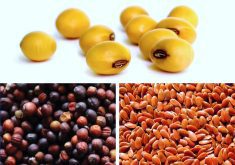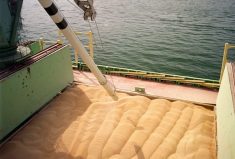The ICE Futures Canada canola market continued its steady climb higher during the week ended Oct. 29, showing no significant signs of letting up aside from some modest profit-taking. More long liquidation could easily rear its head and trigger a correction in the market, but in the larger scope the general uptrend appears to point higher still.
Aside from a few odds and ends, the harvest is complete across Western Canada, as farmers were able to take advantage of the excellent weather this fall. Now that winter is starting to set in and the initial rush of post-harvest selling is calming down, producers have some time to take stock of the situation. While yield reports are all over the map, from what I’m hearing, the consensus seems to be that the firm demand for vegetable oils together with Canada’s relatively smaller crop will keep canola pointed higher. The $550-per-tonne level may be a conceivable topping point from a psychological perspective, but the market is by and large entering uncharted territory to the upside.
Read Also

Brazil muscles into wheat market
Glacier FarmMedia – Canadian wheat exporters are facing a new competitor in their second biggest market. “The rapid emergence of…
Spirit of ‘07
Some ideas floating around would compare this marketing year with the fall of 2007. At that time, canola cash bids were in the $11-to $12-per-bushel area, just as they are now. Back then prices in the country eventually climbed to the $17-per-bushel level, and the theory this time around is that we could see another such rise.
A key difference between now and then that should bode well for prices is the increased crush capacity in Western Canada. With the two new plants at Yorkton, Sask. and expansions at other plants, the crush could top six million tonnes in 2010-11 – nearly a two-million-tonne increase from 2007-08. Crush margins are pretty strong right now, and the pace is already well ahead of the year ago. According to the latest data from the Canadian Oilseed Processors Association, processors have already crushed about 1.4 million tonnes of canola during the first three months of the crop year, up from about 900,000 a year ago. Export demand is also running ahead of the year-ago pace.
Barley futures were steady in lacklustre trade during the week, as any activity in barley continues to bypass the futures in favour of the cash market. On the cash side, recent strength in the U.S. corn market and tightening global feed supplies provided some underlying support for values, but sizable domestic feed grain supplies and smaller herd sizes continued to weigh on prices.
Looking at the U.S., the trend in grains and oilseeds was generally higher as well, although occasional bouts of profit-taking were there as well.
Soybeans and corn both benefited from some relatively stable end-user demand, although some of that buying interest was starting to move away at the highs. Those two commodities will likely keep following each other relatively closely, as the fight for acres next spring is already on.
Winter of disconcertment
While soybeans and corn both posted modest gains, the largest movements during the week were in the wheat, where attention is turning to next year’s U.S. winter wheat crop.
Harvest may seem like a long way off, but the lack of moisture across large parts of the U.S. Plains is already starting to get some play in the futures markets. After all of the dryness problems in Russia this past year, and Canada’s own production issues, the expectations had been for a large U.S. wheat crop to help alleviate any supply tightness in the next year. However, the worry now is that the dryness in the U.S. will lead to poor establishment, leaving the crops susceptible to damage over the winter.
Phil Franz-Warkentin writes for Commodity News Service Canada, a Winnipeg company specializing in grain and commodity market reporting.















